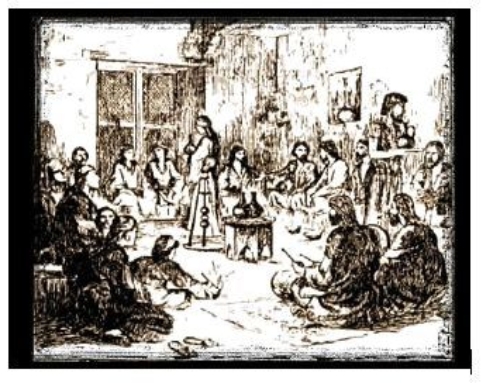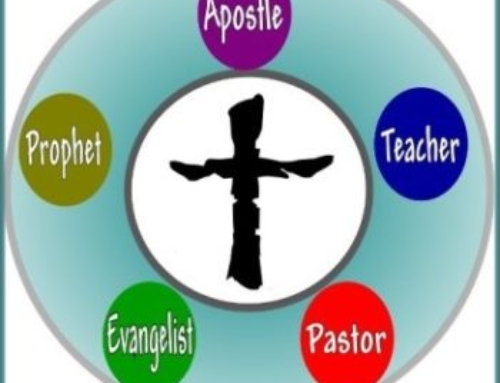A good number of Christians in every generation have always been quite sincere in their desire to follow the New Testament pattern for the gathering of believers and the building of the Ekklesia.[1] However, because scripture seems silent about specific details of what constituted Ekklesia gatherings and how they conducted themselves in the first century assembly, we have had to continue to fall back on the denominationalistic status quo which fortifies the clergy-laity dichotomy and increases division in the Body. What we want to do in this series is to carefully look into the scriptures to see if there are some trails that can lead us to definitively concluding on how meetings were conducted in apostolic times and if we are supposed to follow their example. Please, follow me carefully in this analysis.
[1] The English word “Church” has replaced the original Greek word, “Ekklesia” in most English bibles. While the former literally means a building, the latter means a legislative assembly (historically, Ekklesia was an assemblage of citizens of a Greek city-state called out for legislative purposes). Since Ekklesia and church are NOT synonymous and Jesus said He would build His Ekklesia NOT church, we have chosen to stick with that or its English equivalent: Assembly. For another article that addresses this, click this link.
While there were numerous kinds of Ekklesia meetings recorded in the New Testament (basically in Acts and the Epistles), it is possible to bring all of them under two broad categories. The first is very common to us in modern times but the second is not quite as common. In fact, it was never pin-pointed in scripture and this is why it can be so easily glossed over. More so, the first category seems to have overshadowed the second which is no less important—if not even more important. You see, when giving a narrative, most times, we look for the high points, the attention holder. We don’t bother so much about the daily routine. Is this true in your personal experience? I bet it is.
 |
Now, in the light of that, think of all the New Testament writings. So much of what are recorded for us therein are the high points. John, the beloved apostle, alluded to that in the closing remarks of his gospel account. So, quite naturally, the writers of the N.T. focused more on the first type of meetings which we can generally refer to as the high points in the narrative. And because of this, we assume that the first type of meetings frequently described in their writings is THE ONLY TYPE of meeting in the New Testament assembly.
Now, it is highly essential for us to recover the second type of meeting and to have it fully operational in the Body of Christ because both types are like the two wings of a bird. Two of them must be in place for a bird to fly. They are like the two feet of a man. He needs both feet to walk. Apparently, the Body of Christ has been flapping one wing for a long while but with a recovery of the understanding of this second type of meeting and its correct implementation hereafter, I am convinced [1] The English word “Church” has replaced the original Greek word, “Ekklesia” in most English bibles. While the former literally means a building, the latter means a legislative assembly (historically, Ekklesia was an assemblage of citizens of a Greek city-state called out for legislative purposes). Since Ekklesia and church are NOT synonymous and Jesus said He would build His Ekklesia NOT church, we have chosen to stick with that or its English equivalent: Assembly. For another article that addresses this, click this link.
that she is set to soar higher in her quest to fulfill divine purpose. I am convinced that this understanding will facilitate the full formation of Christ in her and set the stage for His literal return into this time-space world.
So what are these two different types of meetings? Please give me a minute; I’ll get there. In contrasting between the two, I have come to notice that while the first type can be likened to special delicacies we feast on when we go to parties and special events, the second type is the normal food we eat in our homes. Whereas we do not lift a finger in the preparation of the food served in parties, we are solely responsible for the preparation of the food we eat at home. We depend on others for the first but depend on our own selves for the second. Yes, party foods are often sweeter than foods at home, but the stark reality is that no one lives on party foods. They only come occasionally. Sustenance of life and growth comes from what we eat daily in our homes from our own kitchens.
Again, the first type of meetings in the Assembly can be likened to the work of foundation-laying in building construction. When laying a foundation, a lot of cement and gravel are used. Blocks don’t come in at this stage because the foundation must be strong and durable enough to bear the weight of the entire building. But, again, the naked truth is that, as important as the foundation is, no one can live on the foundation alone, neither will you use exactly the same materials used for foundation for the entire building—except, perhaps, you are building an extra-maximum security prison! So after the foundation has been laid, then comes the second type of meeting which is the raising of the walls and the finishing. Now, take note of two things: one, the foundation never takes as long a time as the raising of the walls up to the finishing; two, the foundation is ALWAYS buried out of sight. It is the walls that everybody sees and relates with. Believe me, saints: this has serious implications for our understanding of these types of meetings in the Lord’s assembly.
Finally, I liken the first type of meetings to the breastfeeding stage of a new-born. This stage also has about three sub-stages: total breast milk—nothing added; then gradual addition of water and later baby formula; and then comes in some semi-solid as another addition to the breast milk. These first two sub-stages last for a period of, maximum, 18 months. Finally, enter in the last stage when the infant is completely weaned from breast milk and it is left with semi-solid and solid food. Parents often have the hard time of getting their little ones to eat because compared to the “already prepared” breast milk, chewing and all the other processes in the mouth is hard work. Yet, no one lives on breast milk for more than 2 years at the most. To progress in growth beyond that, the child must brace up to begin to eat by himself. This final stage of the child living on solid food aptly describes the second type of church meeting.





